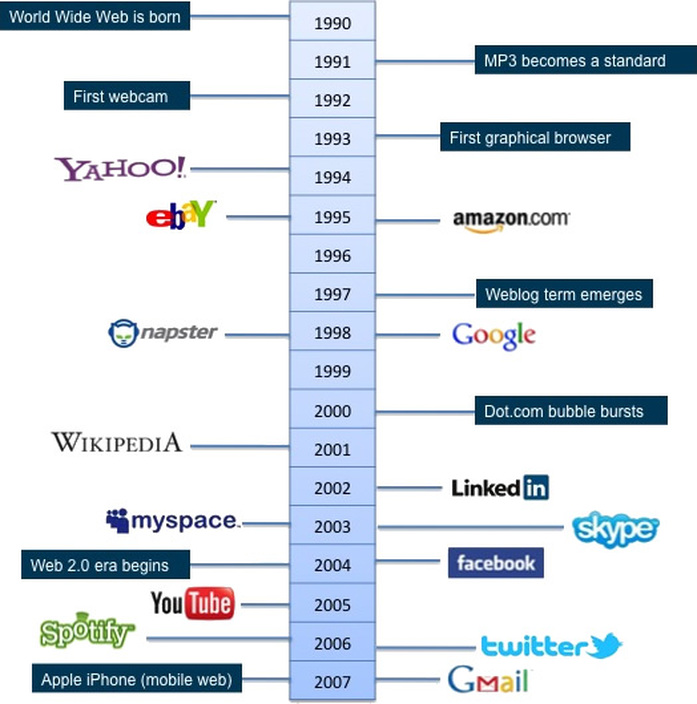The Internet is the global system of interconnected computer networks that use the Internet protocol suite (TCP/IP) to link billions of devices worldwide.
The origins of the Internet date back to research commissioned by the United States government in the 1960s to build robust, fault-tolerant communication via computer networks. The primary precursor network, the ARPANET, initially served as a backbone for interconnection of regional academic and military networks in the 1980s.
The funding of a new U.S. backbone by the National Science Foundation in the 1980s.Although the Internet has been widely used by academia since the 1980s, the commercialization incorporated its services and technologies into virtually every aspect of modern life. Internet use grew rapidly in the West from the mid-1990s and from the late 1990s in the developing world. In the 20 years since 1995, Internet use has grown 100-times to over one third of the world population.
Short History of the Internet
In 1957, the Soviet Union launched the first satellite, Sputnik I, triggering US President Dwight Eisenhower to create the ARPA agency to regain the technological lead in the arms race. ARPA appointed J.C.R. Licklider to head the new IPTO organization with a mandate to further the research of the SAGE program and help protect the US against a space-based nuclear attack. Licklider evangelized within the IPTO about the potential benefits of a country-wide communications network, influencing his successors to hire Lawrence Roberts to implement his vision.
Roberts led development of the network, based on the new idea of packet switching invented by Paul Baran at RAND, and a few years later by Donald Davies at the UK National Physical Laboratory. A special computer called an Interface Message Processor was developed to realize the design, and the ARPANETwent live in early October, 1969. The first communications were between Leonard Kleinrock's research center at the University of California at Los Angeles, and Douglas Engelbart's center at the Stanford Research Institute.
The first networking protocol used on the ARPANET was the Network Control Program. In 1983, it was replaced with the TCP/IP protocol invented Wby Robert Kahn, Vinton Cerf, and others, which quickly became the most widely used network protocol in the world.
In 1990, the ARPANET was retired and transferred to the NSFNET. The NSFNET was soon connected to the CSNET, which linked Universities around North America, and then to the EUnet, which connected research facilities in Europe. Thanks in part to the NSF's enlightened management, and fueled by the popularity of the web, the use of the Internet exploded after 1990, causing the US Government to transfer management to independent organizations starting in 1995.And here we are.
Roberts led development of the network, based on the new idea of packet switching invented by Paul Baran at RAND, and a few years later by Donald Davies at the UK National Physical Laboratory. A special computer called an Interface Message Processor was developed to realize the design, and the ARPANETwent live in early October, 1969. The first communications were between Leonard Kleinrock's research center at the University of California at Los Angeles, and Douglas Engelbart's center at the Stanford Research Institute.
The first networking protocol used on the ARPANET was the Network Control Program. In 1983, it was replaced with the TCP/IP protocol invented Wby Robert Kahn, Vinton Cerf, and others, which quickly became the most widely used network protocol in the world.
In 1990, the ARPANET was retired and transferred to the NSFNET. The NSFNET was soon connected to the CSNET, which linked Universities around North America, and then to the EUnet, which connected research facilities in Europe. Thanks in part to the NSF's enlightened management, and fueled by the popularity of the web, the use of the Internet exploded after 1990, causing the US Government to transfer management to independent organizations starting in 1995.And here we are.
:) :) :) Take Care... :) :) :)




No comments:
Post a Comment